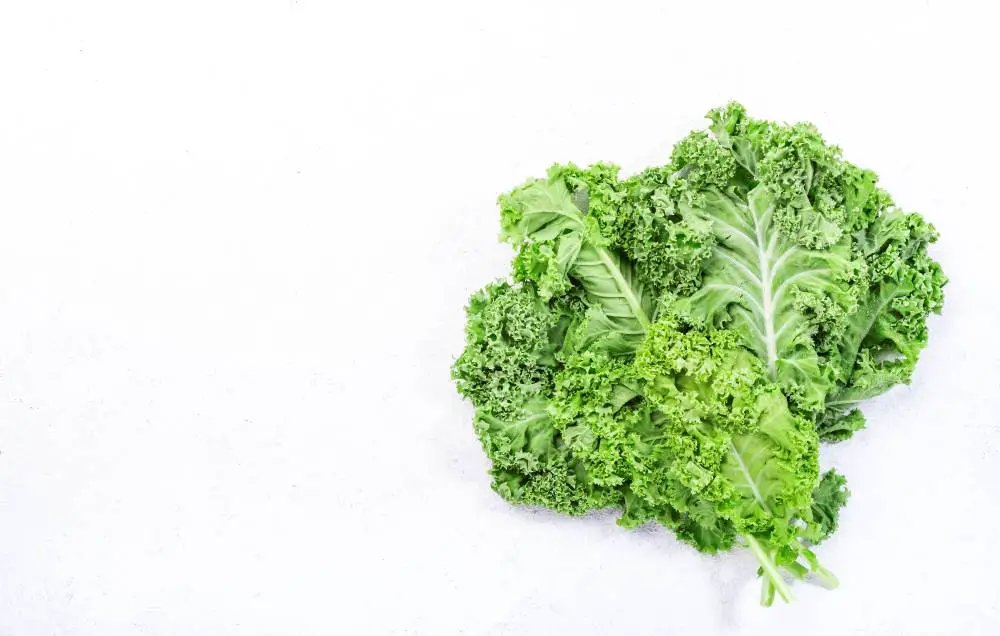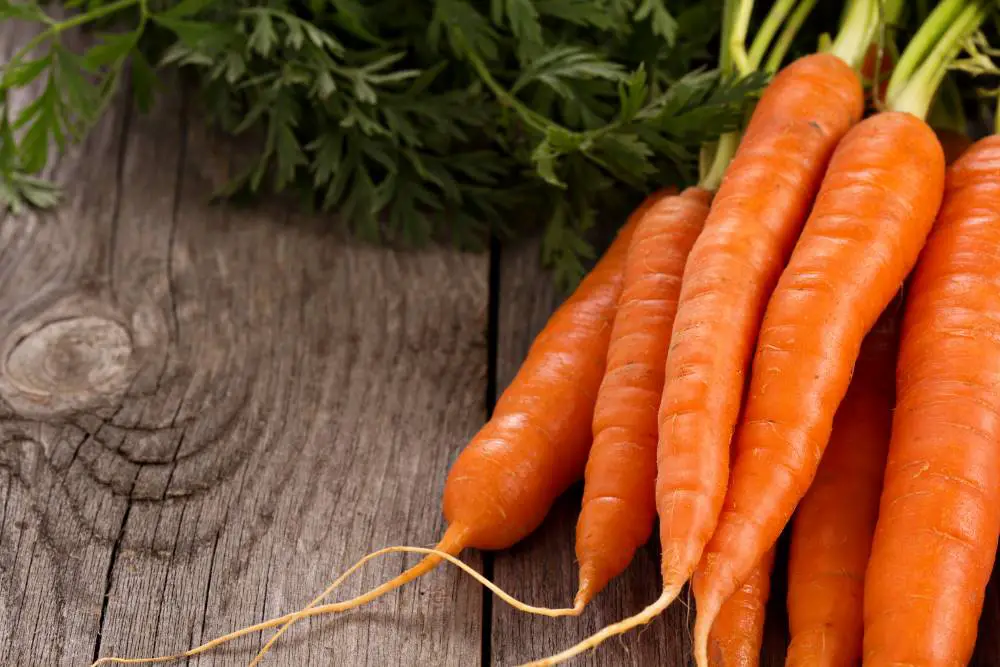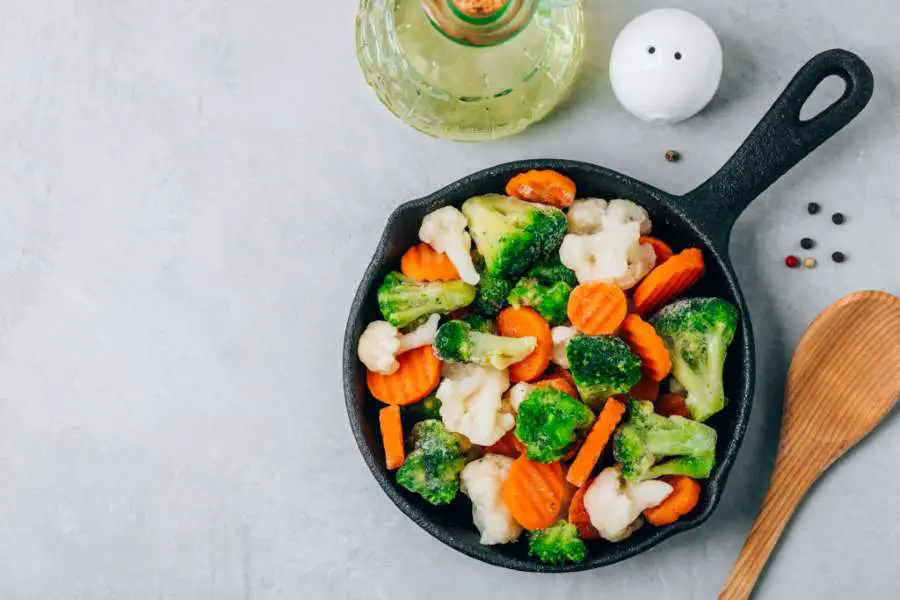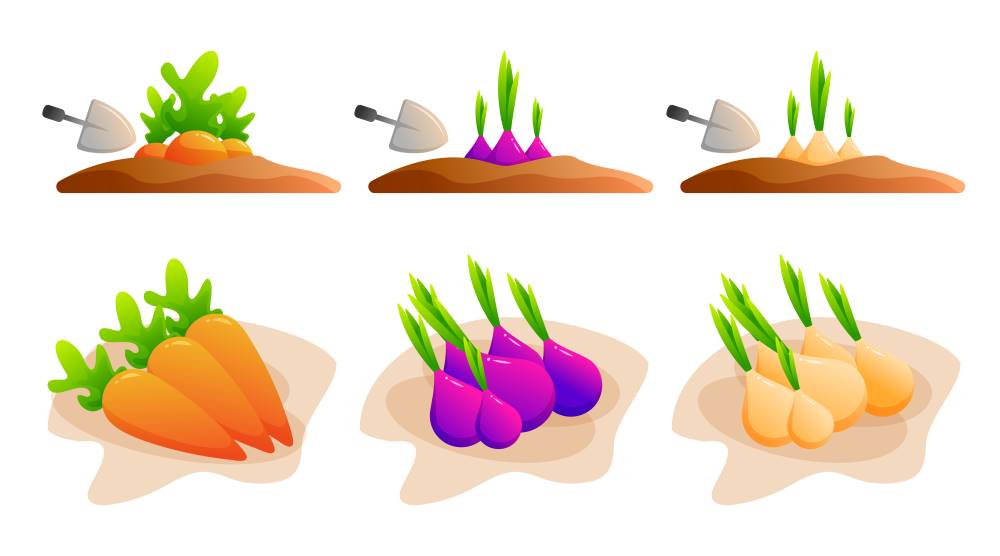Choosing what to eat with histamine intolerance is challenging. Even though vegetables are healthy for most people, not all veggies pass the histamine test.
Some that are healthy for the average person can trigger symptoms if you have histamine intolerance.
Fortunately, there are low-histamine vegetables you can eat, and some you should avoid. Let’s look at some of the best low-histamine vegetable options you can safely add to your plate if you have histamine intolerance.

Low-Histamine Vegetables (Leafy Greens)
Most leafy greens are a nutritious addition to your plate if you have histamine intolerance. They’re packed with nutrients, fiber, and antioxidants too. Some studies show leafy greens have anti-inflammatory benefits that are beneficial to overall health. (4)
Although most leafy greens are safe, avoid spinach if you have histamine intolerance. Spinach contains moderately high quantities of histamine that can trigger histamine intolerance symptoms.
Instead, choose other leafy greens, such as kale. It has the benefit of being low in oxalates, unlike spinach.
Why the concern about oxalates? They reduce mineral absorption and increase the risk of calcium oxalate kidney stones if you have a history of them.
Other leafy greens high in oxalates include Swiss chard and beet greens. Other low-oxalate greens (beyond kale) include: (2)
- Watercress
- Arugula
- Bok Choy
- Romaine Lettuce
- Iceberg Lettuce
- Cabbage
- Mustard, Turnip and Collard Greens
- Endive
With so many health benefits, enjoying 1 or 2 servings of leafy greens daily is wonderful way to get essential vitamins and minerals. You can add leafy greens to soups, stews, and enjoy them in salads.
Just don’t add tomato to your salads. They’re another vegetable that contains substantial quantities of histamine.

Low-Histamine Root Vegetables
Root vegetables are edible plants that have a portion of their edible part growing underground. Common examples of root vegetables are potatoes, sweet potatoes, carrots, beets, turnips, parsnips, radishes, rutabagas, and yams.
They are higher in carbohydrates than leafy greens, low in fat and calories, and contain a variety of vitamins, minerals, and dietary fiber.
Root vegetables are low in histamine, and most people with histamine intolerance can safely enjoy them. However, some root vegetables are more nutrient dense than others.
For more beta-carotene, an antioxidant and anti-inflammatory, choose sweet potatoes over white potatoes.
Carrots are another excellent source of beta-carotene, which also gives this veggie its orange pigment. When in doubt, choose more color!
One way to enjoy low-histamine root vegetables is to roast them in the oven with olive oil, a source of healthy monounsaturated fat that’s also low in histamine. Here’s how:
- Preheat the oven to 400°F.
- Line a baking sheet with parchment paper and spread the vegetables on the tray.
- Arrange them in a single layer and drizzle with extra-virgin olive oil, and a small amount of sea salt.
- Roast the vegetables for 20-30 minutes until they are golden brown, stirring once or twice for even cooking.
- Remove from oven and enjoy.
Be careful with the spices you use. Avoid these high-histamine spices in your recipes. Also, find out whether there are low-histamine noodles you can add to your vegetables.

Low-Histamine Vegetables (Cruciferous)
Another nutrient-dense group of vegetables that are low histamine are cruciferous vegetables. Cruciferous vegetables are a family of vegetables known for their pungent and distinct flavors.
They are an important food group for many diets, as they are rich in vitamins, minerals, and dietary fiber.
Cruciferous vegetables include broccoli, cauliflower, kale, Brussels sprouts, Bok choy, cabbage, kohlrabi, turnips, rutabaga, and collard greens.
These vegetables contain glucosinolates, which are plant compounds that have been linked to potential health benefits, such as a lower risk of certain cancers. (3)
Fortunately, they’re also low histamine. Furthermore, the potential anti-inflammatory benefits of these vegetables makes them beneficial for low-grade inflammation.
One area of controversy is whether compounds called glucosinolates in cruciferous vegetables reduce thyroid function in people with an underactive thyroid.
Most research suggests eating cruciferous vegetables in moderation won’t affect thyroid function but talk to your doctor about whether to eat them if they’re treating you for a thyroid condition.
One study found a broccoli sprout beverage a concentrated source of broccoli is safe for people with thyroid conditions. (1)
Vegetables to Avoid on a Low-Histamine Diet
There are a few vegetables you should avoid with histamine intolerance. These include:
- Tomatoes
- Spinach
- Avocado (actually a fruit)
- Eggplant
Also, stay away from all fermented vegetables. Although the probiotics in fermented foods may be beneficial for the gut microbiome, they can be kryptonite if you have histamine intolerance.
Also, use low-histamine vegetables as quickly as possible (within 2 days), since storage can increase biogenic amines. Fresh is best with histamine intolerance. Avoid eating leftovers of any kind too.
Find out whether tomato sauce is low histamine.
Why Low-Histamine Vegetables Are an Excellent Addition to Your Diet
Why would you want to add low-histamine vegetables to your low-histamine diet? Low-histamine vegetables are rich vitamins, minerals, and antioxidants, and offer additional benefits if you have histamine intolerance:
- They’re rich in fiber to a healthy gut microbiome.
- Low histamine vegetables contain vitamins and minerals that help support a healthy immune system.
- Some low histamine vegetables contain anti-inflammatory compounds that may be beneficial if you have histamine intolerance.
- Non-starchy vegetables have minimal impact on blood sugar.
- Vegetables are heart healthy.
The key is to avoid vegetables high in histamine, such as eggplant, avocado, tomatoes, and spinach. Of course, you should avoid fermented vegetables, like sauerkraut too, since they are high in histamine too. (6)
Enjoy Low-Histamine Vegetables in Your Favorite Recipes
Salads are a simple and tasty way to meet your veggie quota, and, fortunately, you have a lot to choose from. According to the Centers for Disease Control and Prevention (CDC) (5), only one in ten Americans consume enough fruits and vegetables. Make sure you’re getting yours!
Try combining leafy greens, root vegetables, and cruciferous vegetables into a salad, and top it with an olive-oil based dressing for a delicious and nutritious meal.
Add leafy greens to sandwiches and wraps. Steam or roast cruciferous vegetables for a healthy side dish.
Soups and stews are another way to get your daily dose of low histamine vegetables. Try adding leafy greens, root vegetables, and cruciferous vegetables to your favorite soup and stir recipes, or make a veggie stir-fry using low histamine vegetables.
Substitute low-histamine veggies for starchy side dishes. Skip the mashed potatoes and have pureed cauliflower, and replace white rice with cauliflower rice. These are sneaky, but effective ways to get more vegetables into your diet. Find out about the histamine content of corn.
Conclusion
Low histamine vegetables are rich in nutrients and may reduce inflammation, and may offer some protection against chronic health problems, like cardiovascular disease, especially if you replace ultra-processed foods with veggies.
Now you know what your options are. Be sure to keep a food diary and see how you respond to different vegetables. It’s possible to have sensitivities to other components in vegetables.
Also, discover low-histamine whole grains that are healthy and whether leftover vegetables are safe to eat.
References:
- Chartoumpekis DV, Ziros PG, Chen JG, Groopman JD, Kensler TW, Sykiotis GP. Broccoli sprout beverage is safe for thyroid hormonal and autoimmune status: Results of a 12-week randomized trial. Food Chem Toxicol. 2019 Apr;126:1-6. doi: 10.1016/j.fct.2019.02.004. Epub 2019 Feb 5. PMID: 30735751; PMCID: PMC6422739. https://pubmed.ncbi.nlm.nih.gov/30735751/
- “The Best Low Oxalate Greens – The Kidney Dietitian.” https://www.thekidneydietitian.org/low-oxalate-greens/.
- Soundararajan P, Kim JS. Anti-Carcinogenic Glucosinolates in Cruciferous Vegetables and Their Antagonistic Effects on Prevention of Cancers. Molecules. 2018 Nov 15;23(11):2983. doi: 10.3390/molecules23112983. PMID: 30445746; PMCID: PMC6278308.
- Gunathilake KDPP, Ranaweera KKDS, Rupasinghe HPV. In Vitro Anti-Inflammatory Properties of Selected Green Leafy Vegetables. Biomedicines. 2018 Nov 19;6(4):107. doi: 10.3390/biomedicines6040107. PMID: 30463216; PMCID: PMC6316011.
- “Only 1 in 10 Adults Get Enough Fruits or Vegetables.” 16 Feb. 2021, https://www.cdc.gov/nccdphp/dnpao/division-information/media-tools/adults-fruits-vegetables.html.
- Chung BY, Park SY, Byun YS, Son JH, Choi YW, Cho YS, Kim HO, Park CW. Effect of Different Cooking Methods on Histamine Levels in Selected Foods. Ann Dermatol. 2017 Dec;29(6):706-714. doi: 10.5021/ad.2017.29.6.706. Epub 2017 Oct 30. PMID: 29200758; PMCID: PMC5705351. https://www.ncbi.nlm.nih.gov/pmc/articles/PMC5705351/

